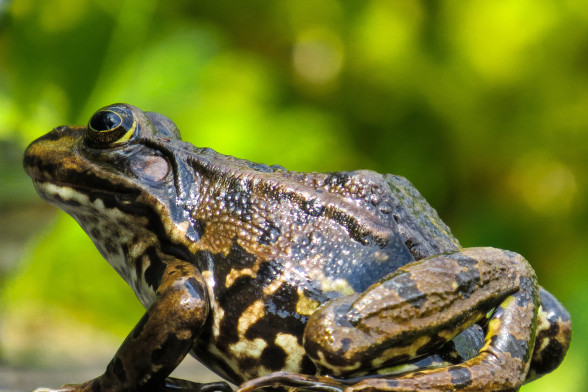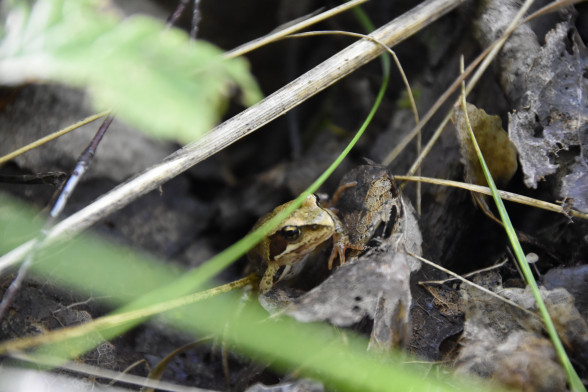
Brown frogs
Habitat
Brown frogs inhabit almost any habitat in Latvia, except some high marshes with very acidic water, and towns and cities. They can be seen in the water during the short breeding period in April. Wakes up from hibernation immediately after the snow melts and immediately moves to place of breeding. Spawns in any body of standing water; brown frogs are not too picky about water quality. Winters underwater: in streams, rivers, lakes or peat bogs.
Diet
Common frogs eat insects, their larvae, wood lice, spiders, snails and worms. They are able to detect worms by smell. The diet of the brown frogs includes a variety of terrestrial invertebrates: beetles, butterfly larvae, insects, spiders, molluscs, earthworms and millipedes, the composition of which depends on the habitat and season.
Frogs eat less during the spawning season.
Important and interesting facts
Moor frog, Grass frog
There are 2 species of brown frogs in Latvia: the grass frog and the moor frog – they are very similar in appearance. The grass frog is larger, while the moor frog has a pointed and elongated snout. The grass frog has a distinctive dark marbled pattern on its abdomen, whereas the moor frog has a white abdomen. Active at dusk and in the dark. Occasionally seen during the day, especially after rain or in cloudy weather.
Frogs are very good jumpers because they have long, strong hind legs; they are also good swimmers. They spawn not only in permanent bodies of water, but also in places such as puddles, ditches, and rills in the road.
During breeding season, males form breeding choruses. Their calls can sound like air escaping from a submerged empty bottle: 'waug...waug...waug', can resemble a distant barking, growling or snarling of dogs.
During breeding, the female may die from the strong 'hug' of the male - who sometimes grabs her so hard that he can tear her thin skin.
Information sources: latvijasdaba.lv, Wikipedia, www.krasnouhie.ru
Photos: redzet.eu, pixabay.com

